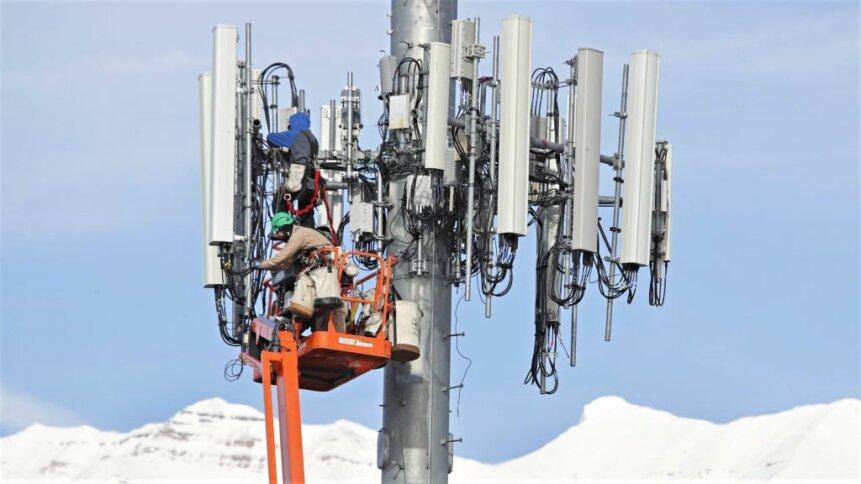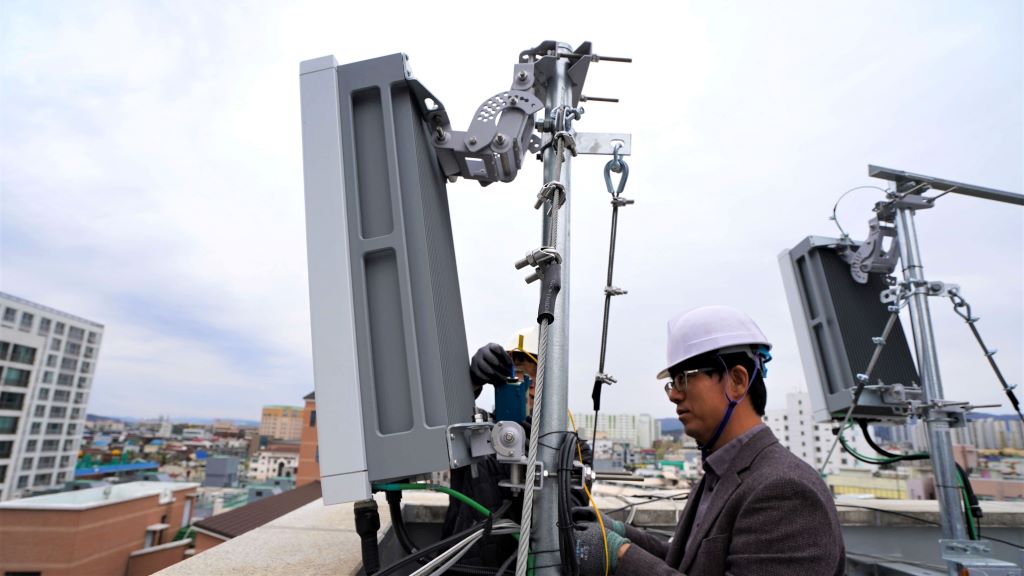Is a private 5G network the right choice for your business?

|
Getting your Trinity Audio player ready...
|
Twelve months ago, Frost & Sullivan made the case for why private 5G networks will be game-changing for some companies. And Troy Morley, an Industry Principal at the business consulting firm, believes that over the next decade private 5G networks will evolve to support the needs of smaller businesses in almost all industries.
What makes a private 5G network the right choice for firms?
Installing a private 5G network addresses a series of pain points that businesses may face. The first is network coverage. Cell towers in public mobile networks are primarily located based on demand – for example, across urban sites with large populations and alongside transport routes.
And this arrangement is fine for companies based in metropolitan areas or near the highway. But what if firms have business interests in remote locations that need to be connected locally and to headquarters? Extreme examples are underground operations such as mining and activities out at sea.

Telecoms trend: 5G antennas being installed on a building in South Korea. Image credit: Ericsson.
It may also be the case that firms near a public mast have great coverage outside, but experience dead spots when trying to use the cell network inside. Morley notes that factories and warehouses can have problems in this area, with buildings and their contents acting as potential sources of signal interference.
Given these network coverage concerns, it’s easy to understand why early adopters of private 5G networks have been operators in mining, energy, and manufacturing industries. There’s also data security to consider, which is another reason for firms to opt for a private setup rather than build solutions using public mobile network infrastructure.
5G performance gains
5G brings faster download speeds and low-latency performance to devices. And high-definition video and mobile gaming are well-advertised as reasons for mobile customers to ditch their old smartphones and buy new 5G handsets. But this is just scratching the surface.
“While most consumers think that 5G is all about them, the truth is 5G is ideal for addressing the networking needs of business and enterprise,” writes Morley.
For example, 5G brings significant edge capabilities. Private 5G networks don’t just connect staff, they enable industrial IoT communications too. And wireless networks provide flexibility to make businesses more agile and composable – in other words, tools and teams are easier to reconfigure for different projects.
Cellnex’s Catherine Gull lists automation, worker safety, and situational awareness as the top three benefits that private networks can bring to operations. Enterprises can use 5G systems to automate indoors and outdoors, from self-driving vehicles to factory robots.
“They do it to increase safety, and they do it to increase reliability,” she told UPTIME attendees in June 2023. “The more of these robots that you put in one single space, the more other mechanisms of connectivity fall down and become unreliable or unsafe.”
Gull makes a strong case that systems such as private 5G networks give users reliable bandwidth and, for firms, can be ‘where they want them, when they want them, and how they want them’. And companies are no longer held back by the downsides of basing their operations on a public mobile network.
Laying the tracks to 5G-powered industries! Hungary's EWG Intermodal Terminal partnered with #Huawei to deploy a powerful private #5G network to manage freight, automated cranes, and staff management, completely changing the game in rail industry safety and efficiency.… pic.twitter.com/k0rh0JGm1b
— Huawei (@Huawei) July 26, 2023
Adding to the appeal of being in full control, firms may find that they are able to stack multiple use cases on private 5G networks. Beyond automation, systems can also enable asset tracking, help with training, streamline maintenance, and provide ERP integration – to give just a few additional applications.
Once businesses have the fat bandwidth that 5G offers, there’s a lot that they can do. And low latency (plus video over wireless) opens the door to accurate remote control, which has broad appeal across a wide range of industries – from logistics to healthcare.
“Most enterprises start with something that is really key to them and that’s oftentimes connectivity availability,” Gull points out. “And once that’s resolved, you can build on that.” Cellnex, headquartered in Spain, has more than 138,000 sites on which mobile network operators (MNOs) put their infrastructure. And it has cell towers located in 12 countries.
What private 5G network architecture do you need?
The multiple antennas associated with 5G infrastructure enable powerful beamforming capabilities. Signals from multiple 5G radios can be purposefully overlapped and grouped together. And regions of constructive interference in the emissions can even be steered toward devices by adjusting the phase of each of those broadcasts.
As the name suggests, mobile networks are ideal for maintaining connections on the move, and beamforming adds further precision to the technology. Using beamforming methods, signals can be tuned to follow devices. Buildings can be utilized too, as reflective surfaces to bounce mobile signals to recipients.
One of the trade-offs of using much higher frequencies, which offer more bandwidth, is that these shorter wavelength mobile signals don’t travel as far. But beamforming has been shown to compensate for this, putting suitably configured 5G systems on par with longer wavelength 4G networks, in terms of coverage – at least at the lower end of the 5G spectrum.
Technically, to use 3GPP (the standards group for mobile broadband) terminology, a private 5G network is dubbed a ‘5G non-public network’, highlighting the absence of commercial MNO subscribers. And, as mentioned, such networks could be providing industrial control or replacing enterprise Wi-Fi.
Radio access requires physical hardware, but core network elements can be virtualized and made available in the cloud. Also, circling back to the security advantage for businesses running private 5G networks, enterprise systems will only be visible to authorized user equipment.
Devices belonging to the 5G non-public network will look for a standalone non-public network (SNPN) ID. In contrast, consumer devices latch onto mobile services based on a public land mobile number (PLMN) ID – a combination of a mobile country code and a mobile network code – which is one of the details contained on a handset’s SIM.
Private 5G network starter kit
AWS is trying to bridge the knowledge gap for business users who are thinking about experimenting with private 5G services. The cloud giant has a kit that’s priced based on network traffic rather than the number of connected devices. And, based on the AWS demo video, the setup process is straightforward – comparable to configuring a Wi-Fi network.
Taking a kit-based first step gives firms the chance to run small-scale pilot schemes ahead of making larger investments in mobile infrastructure. And AWS is by no means the only vendor offering easy to navigate solutions. Firecell’s Orion Private 5G dashboard requires no knowledge of a 5G network architecture and configuration.
And the French firm, which aims to democratize private networks and believes in open source as the way forward in telecoms, can supply clients with a rack server, access point, ten pre-configured SIM cards, and one omnidirectional antenna to see how a private 5G network can improve company performance.
If the idea of private 5G networks sounds appealing and you want to run the numbers on whether it’s an investment that’s worthwhile for your organization, Nokia has made available a 5G business modeling tool. The web application allows users to compare the total cost of ownership of Wi-Fi versus 5G wireless and is based on more than 220+ customer use cases.
Returning to the Frost & Sullivan observations at the top of the story, businesses could end up being the big winners from 5G, as telecoms firms will be highly motivated to tailor their solutions to industrial clients.
“Communications Service Providers (CSPs) have invested significantly in 5G,” emphasizes Morley. “The stark truth is those CSPs depending just on the consumer market for a return on investment will fail.”










